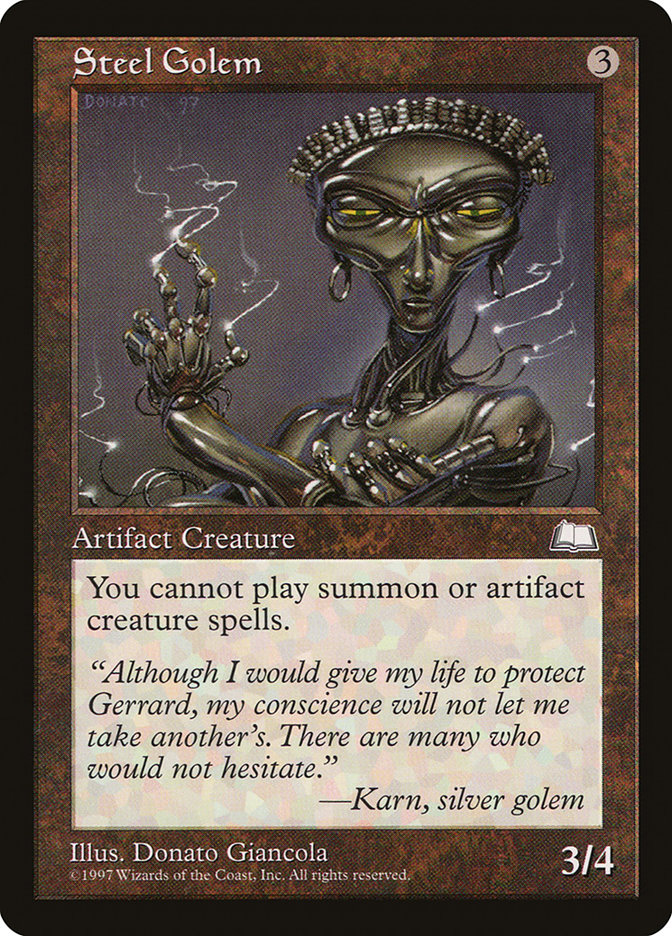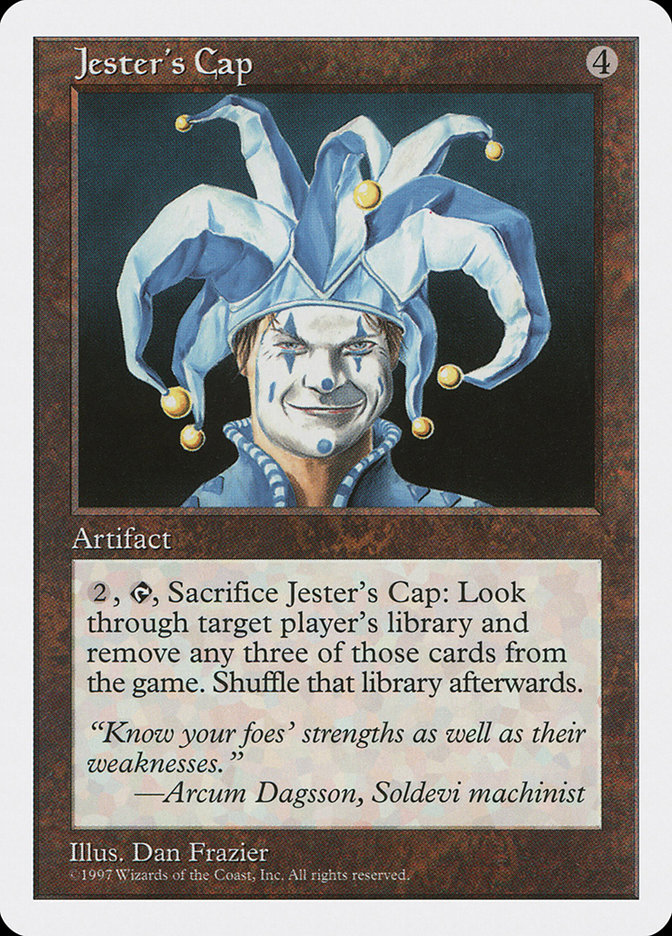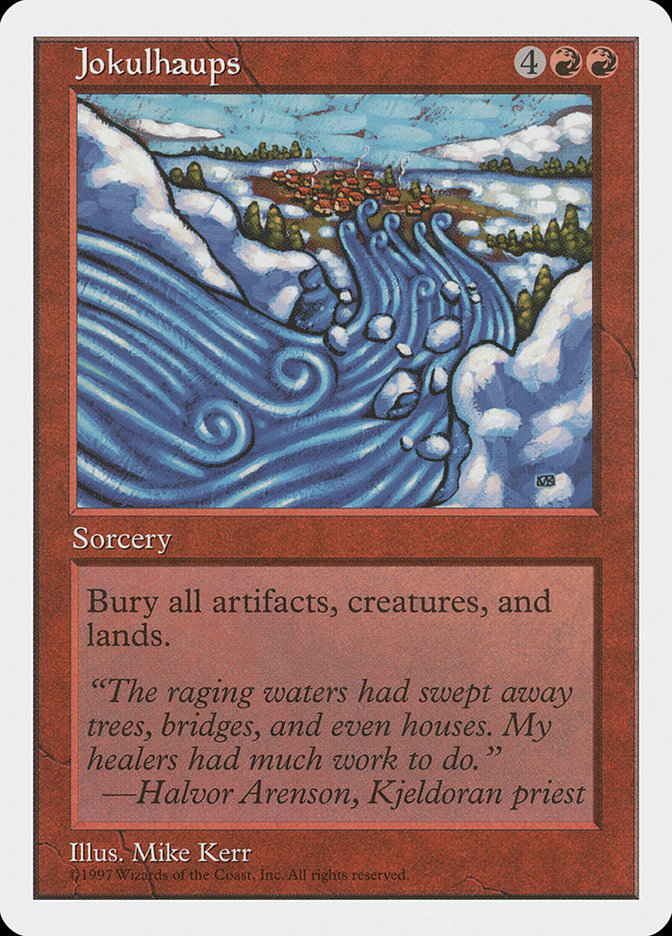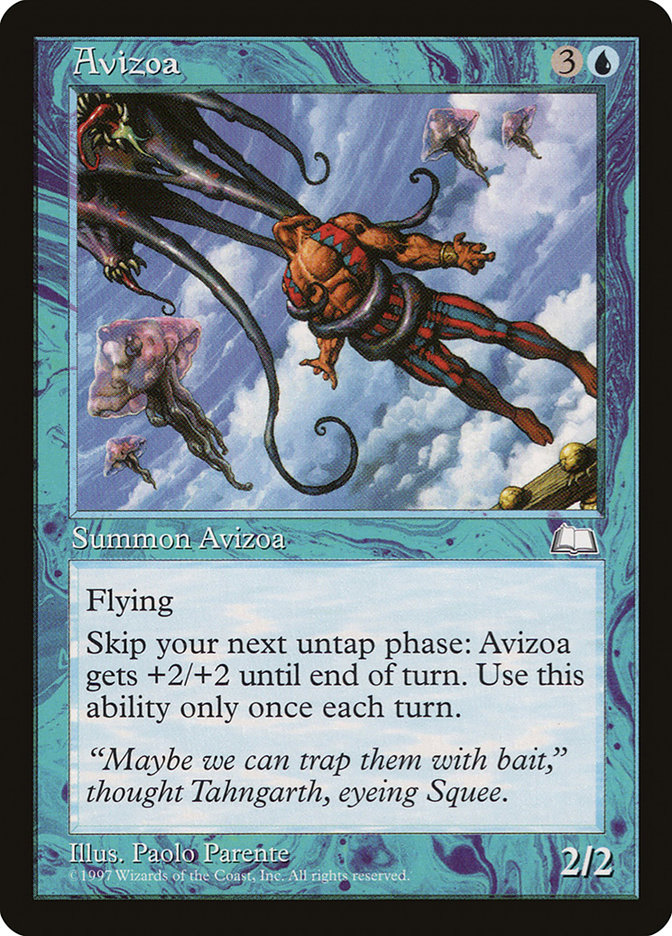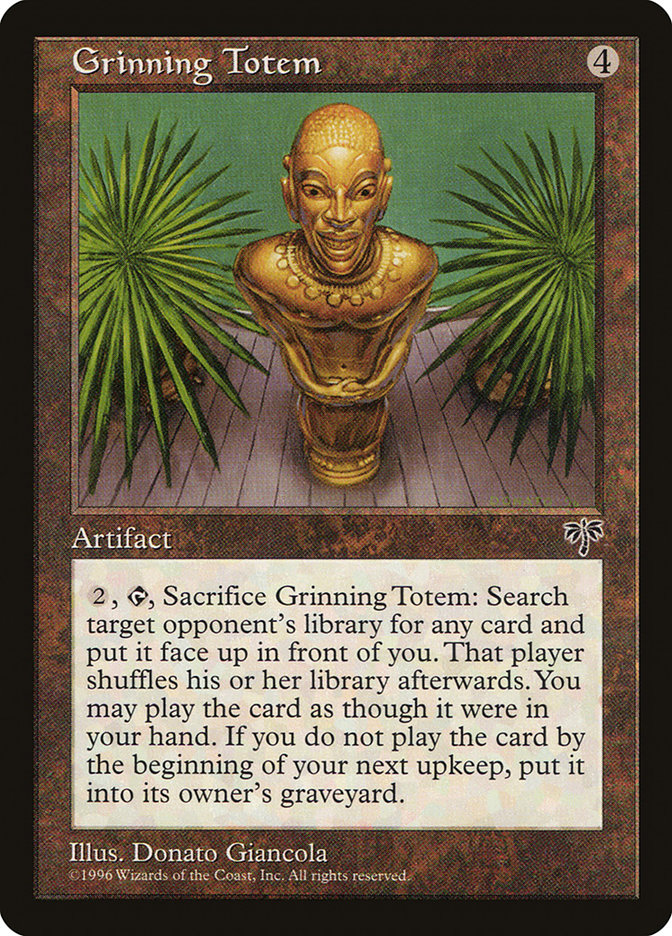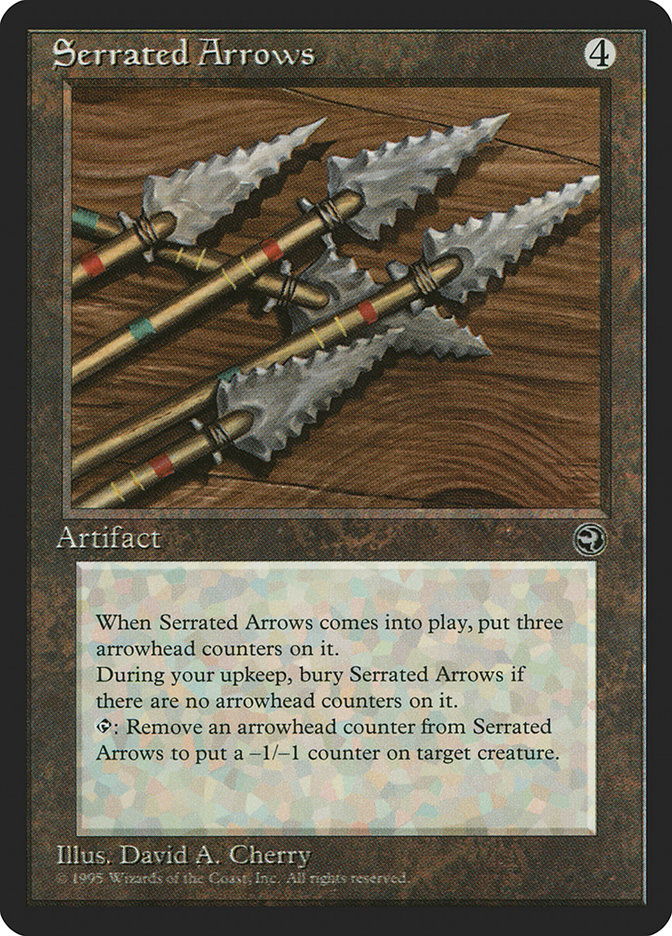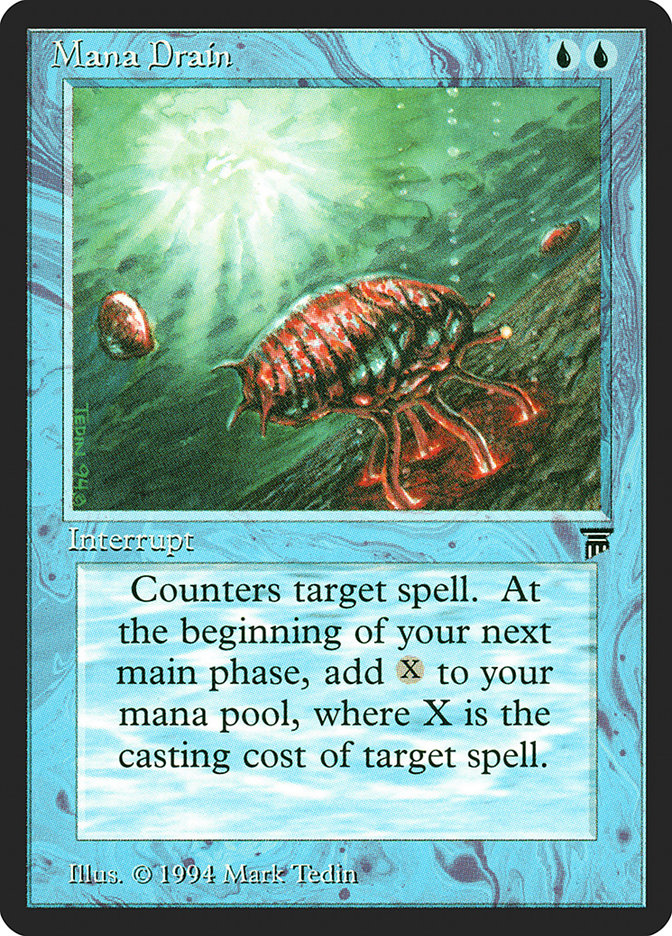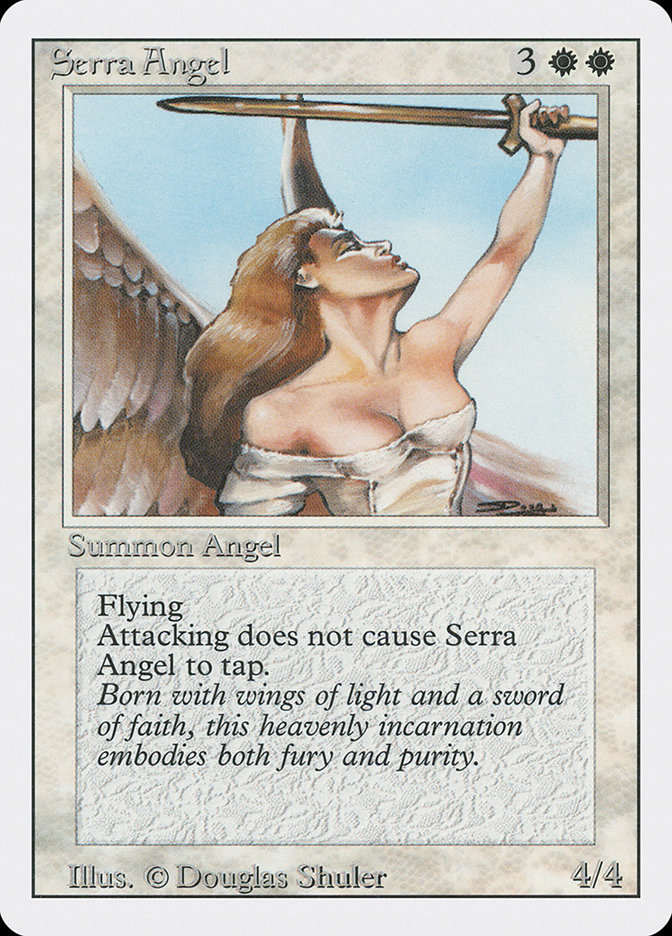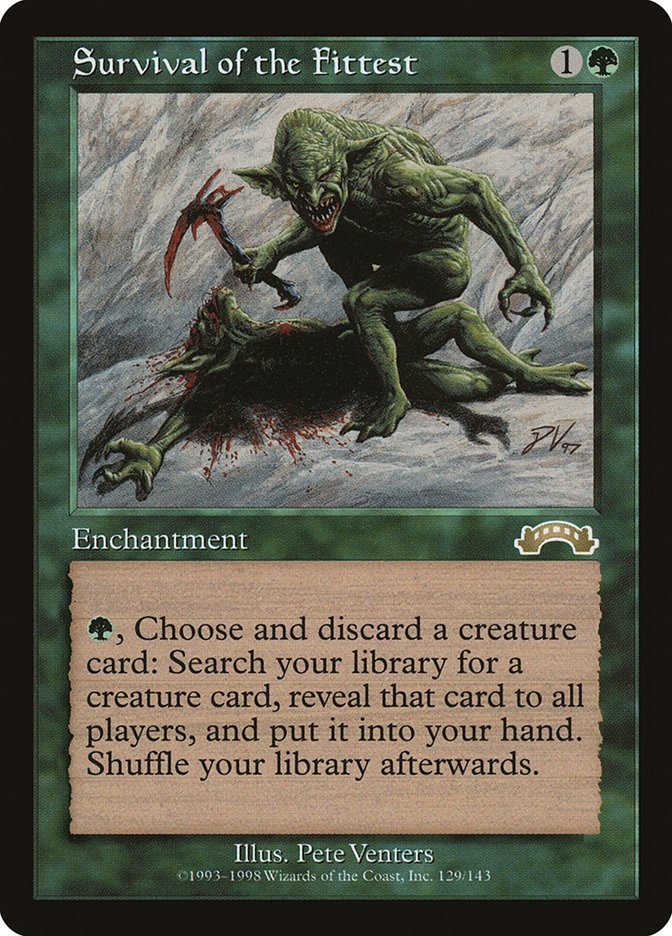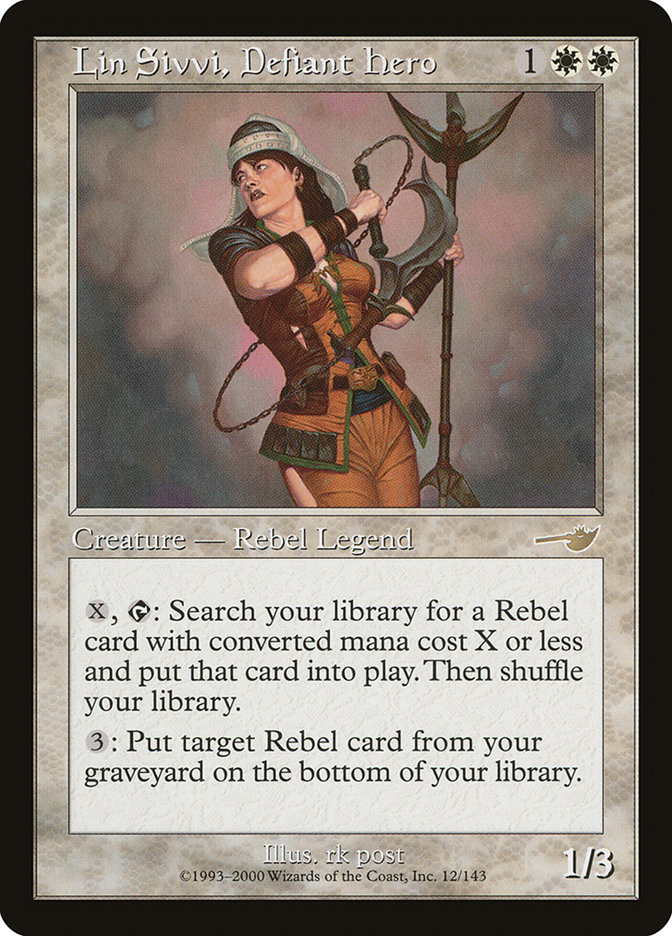When this Standard is over, we will miss it dearly.
There are any number of old formats that weren’t particularly great that some of us still reminisce about. Imagine how much we’re going to tell new players
about this one in the future.
Let’s talk about this past Sunday. It had to have been the eighth or ninth day in a row that it had rained. A local shop–Gamer’s Paradise, shoutout–a
half-hour down the road was hosting an IQ, and though I’m very often tied up with work or blissful home endeavors, it occurred to me that someday this
Standard, like all of us, will die, and that I should spend as much time with it as possible before it’s over.
Creatures (21)
- 4 Fleecemane Lion
- 2 Heir of the Wilds
- 3 Anafenza, the Foremost
- 4 Rakshasa Deathdealer
- 4 Siege Rhino
- 2 Warden of the First Tree
- 2 Surrak, the Hunt Caller
Planeswalkers (2)
Lands (26)
Spells (11)

I’ll talk about my experience with the deck in a bit, but first I want to go down memory lane.
When I started playing, Mirage was on the shelves, and Weatherlight was to be released within the week. Fifth Edition, with its
interrupts and its mana sources, was the place to go for basic land cards and such.
Starter decks we called them. We didn’t know what our rares were, and we liked it!
So yeah, you could say I’ve been around a while. It wasn’t until a few years later that competitive Magic started to interest me over casual Magic, but I
can’t imagine playing the Necropotence mirror several times a day was really much to write home about, so let’s assume I’m still an expert on that era by
extension.
Some of my favorite decks of all-time are from this era, but that’s partly because I didn’t have to play against them much. Information was at a premium
back then (the Internet was too young for most of us to possess with any regularity or reliability), and Magic didn’t have the insane amount of coverage
and tournament opportunity it has today. You’d see a winning deck in a magazine two months after it was relevant, and you’d build it to beat your brother
or your neighbor or whoever. My metagame for most of those first few years was bad burn decks and tribal Spikes. The only “tournaments” that I played in at
that time were on the back of the school bus. The round time limit was based on how long you had before your stop.
Greatest hits from those days include:
Creatures (24)
- 1 Spike Weaver
- 1 Verdant Force
- 1 Tradewind Rider
- 4 Wall of Blossoms
- 4 Birds of Paradise
- 1 Man-o'-War
- 2 Nekrataal
- 2 Uktabi Orangutan
- 2 Spike Feeder
- 2 Wall of Roots
- 1 Spirit of the Night
- 1 Orcish Settlers
- 1 Cloudchaser Eagle
- 1 Thrull Surgeon
Lands (22)
Spells (14)
Sideboard

Creatures (18)
Lands (20)
Spells (22)

Creatures (14)
- 1 Serra Angel
- 2 Llanowar Elves
- 4 Erhnam Djinn
- 2 Fyndhorn Elves
- 2 Spectral Bears
- 1 Autumn Willow
- 2 Order of Leitbur
Lands (22)
Spells (24)

Lands (25)
Spells (35)
- 4 Natural Balance
- 4 Vampiric Tutor
- 1 Drain Life
- 1 Power Sink
- 4 Prosperity
- 2 Memory Lapse
- 4 Impulse
- 4 Squandered Resources
- 4 Infernal Contract
- 4 Cadaverous Bloom
- 1 Elven Cache
- 1 Three Wishes
- 1 Emerald Charm
Sideboard

Behold, all that is removal:
When I say that we’re in the greatest Standard format of all-time, it should mean something, because I’ve seen a lot of them.
What Defines a Great Format?
Different players will tell you different things, but if we’re trying to capture the most common answer, I’d say diversity. There’s a pretty direct link
between formats that players really look fondly on and the sheer number of different types of decks you can play and expect to have a chance at
accumulating some wins.
Legacy has been in this position off and on for years, with only Survival of the Fittest and Mental Misstep really sludging up the show for a period. It’s
probable Treasure Cruise may have put the format in an iffy place, but thankfully, we never got the chance to truly find out.
Based on the results of Modern States, it also seems that format is in decent shape, though I think Twin is an exceptionally dangerous-though not yet
degenerate-archetype. We’ll talk a little more about Twin in a second.
With enough card flow and a touch of regulation, Eternal formats are pretty good at maintaining and policing themselves.
However, Standard is a different entity altogether. Part of the diversity (and by extension, health) of a given Standard is in its ongoing evolution. New
sets must infuse enough “newness” to realign Standard without either causing almost no impact (Dragon’s Maze, Prophecy), but at the same time,
they must not push an archetype so far into the stratosphere that it blows up an already bad situation (New Phyrexia, Fifth Dawn).
Maybe the key to a healthy Standard is just to never go back to Mirrodin.
So What Makes This Standard So Unbelievable?
To truly comprehend how ludicrous of a design success this Standard format is, you first need to understand how difficult it is to produce a game with as
many moving pieces as Magic. It is a task of utmost delicacy. As a Magic designer and developer, you are trying to produce a balanced and diverse card pool
in an already complicated game, and you only get a few dozen individuals. You have to be creative, you have to make deadlines, you have to make an exciting
product. Then, weeks before your set is even on shelves, it’s on the Internet in its entirety for everyone to see. That’s when hundreds of thousands of
players take control of your work and tear into it. It is their utmost goal to make you look like a fool as quickly as possible.
And if they don’t get it right that first week? Everything they came up with will be documented, poured over, and they’ll try again.
If you’re creating Magic cards, you and only a handful of people have to create a problem that hundreds of thousands of players are not able to
collectively solve. One small oversight means you get Deceiver Exarch + Splinter Twin. One over-tweak and you get Batterskull. Somebody needs to leave work
early ten minutes? Bam. Pack Rat.
But here we are approaching the summer of 2015. They keep adding sets to this Standard, and it just keeps working, and that is a monumental accomplishment.
It’s worthy of our appreciation and then some.
It’s a fitting irony that this was the last Standard before the new set rotation, though that doesn’t make it an incorrect (don’t be results-based, kids!)
move. There’s no greater swan song for what will become the obsolete rotation schedule than a format this unbelievably miraculous.
With all that said, diversity has its consequences.
Magic is Dead
We’ve established that I’ve been playing Magic since around the time humanity found the wheel. How amazing is it then that this Standard has put me in a
position where I am fundamentally uncomfortable with Magic as I’ve always known it?
Sort the following cards. You will utilize three categories for doing so: aggro, control, and crap.
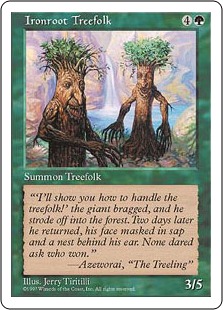

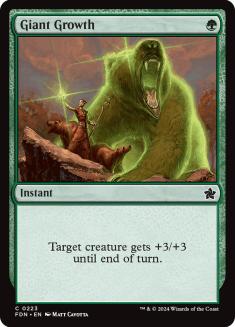
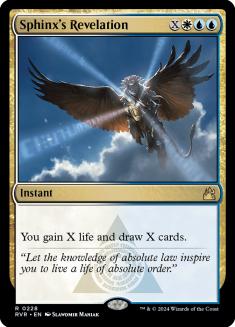
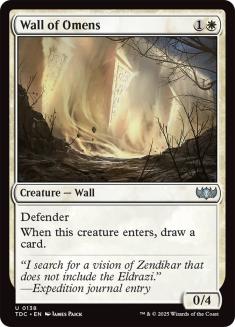



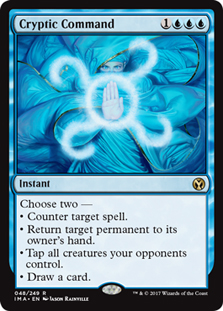
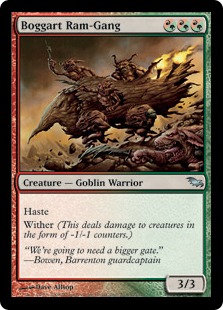
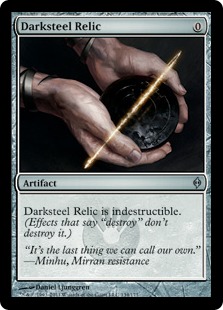
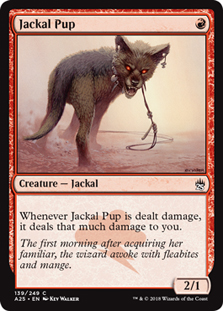

Most players with any sort of competitive Magic experience could evaluate these and sort them as requested because they understand card purpose. These
aren’t the only categories cards can fall under obviously, but it does remind us that there is a great historic spectrum to what kind of strategies certain
cards fall under. Current Standard has this to some degree, sure. Look at Foundry Street Denizen. That card is obviously an aggro card.
But what about these?
The people who create Magic have been honing their Standard experience for a lot of years now, and they’ve finally struck something they’ve probably been
looking for for a long time.
When competitive Magic was still young, the spells were way better than even the best creatures.
So, of course, you push creature strategies.
That gets a bit degenerate, so you tweak mechanics and mana costs. Eventually, control and its spells get the upper hand again.
What else can you do at this point? It’s time to push creatures a little closer…
Now the creatures are too good. What do you do? Give the spells help one more time…
If you exclude combo decks and poorly implemented mechanics (which were often just development oversights) doing what they were never supposed to be doing
to tournament Magic (Affinity, Tinker, etc.), you get this history of tug-of-war between aggressive creature-based strategies versus counterspell and Wrath
variants. They always co-exist in the same formats, but they were very clearly defined. If I was playing Kird Ape or Ash Zealot, it was my job to kill my
opponent as quickly as humanly possible. If I was playing Day of Judgment or Supreme Verdict, it was my job to get as much value as I could out of sweepers
and permission spells until I could land a Sun Titan or a Baneslayer Angel and win shortly thereafter. Lots of decks have in-between qualities, and lots of
Standard formats had cards with some gray area.
But we’ve never seen anything like this.
This format is the pinnacle of what I call The Design Pinch. This is where both sides of the aggro and control philosophies have been so balanced that
they’ve come together pretty much as equals. This has the effect of blurring the line between each card’s traditional purpose.
Dig Through Time is obviously a control card, right?
Creatures (14)
Planeswalkers (2)
Lands (25)
Spells (19)

Interesting.
Well, surely Elspeth, Sun’s Champion is a control card. There’s pretty much no debating that. It’s a six-mana planeswalker.
Creatures (20)
Lands (25)
Spells (15)

Weird. Okay, well how about the aggressive cards? Surely, you won’t find any two-mana 3/3s in control builds, right?
Creatures (10)
Planeswalkers (3)
Lands (26)
Spells (21)

So, where is all this going?
This is the first time in a Standard format that the creatures and the spells are costed so that the entire format is smashed together into one middle of
the road equilibrium. The cards in this format are so aligned on power that so many of the traditional rules that applied to common Magic thought and
strategy serve little purpose playing in this format. If you’re playing a Mono-Red Aggro deck or the Esper Dragons deck, yeah, your Magic matches will be
pretty traditional, but those are the absolute extremes of the format, and even then, these are relatively new forefront strategies in the post-Dragons of Tarkir cardpool.
This is a format where some of the control decks play only a single Wrath effect, if one at all. This is a format where you can be the aggressor in game 1,
and then after sideboard, you’re as far into control territory as your deck will possibly allow. This is a format with major graveyard strategies, and
nobody is willing to play with Tormod’s Crypt in their sideboard.
Is Siege Rhino an aggro card or a control card? What sort of deck does Dig Through Time slot into? Is Jeskai Ascendancy a niche combo piece for a combo
deck, or is it a token enabler? Is Fleecemane Lion an aggro deck beater with a crazy good rate, or is it a lategame win condition?
What about these two?
The answer is all of the above and more. This format has so many cards that violate traditional deckbuilding theory by being so dynamic that it has
fundamentally changed how I approach playing and thinking about Magic. This phenomenon is further demonstrated by the inclusion of a lot of cards with
three or four modes each. Cards are flexible, they’re equal in power level, and as a result, this format is a new beast entirely.
Magic, as I know it, is dead. But man, this new Magic is a lot of fun.
The Consequences
So if all the cards and strategies are on such equal footing and the format continues to evolve, how does that change things?
Let’s go back to that IQ I went to on Sunday. Again, here’s the deck:
Creatures (21)
- 4 Fleecemane Lion
- 2 Heir of the Wilds
- 3 Anafenza, the Foremost
- 4 Rakshasa Deathdealer
- 4 Siege Rhino
- 2 Warden of the First Tree
- 2 Surrak, the Hunt Caller
Planeswalkers (2)
Lands (26)
Spells (11)

Let’s compare that to Andrew Boswell’s latest Open Series effort.
Creatures (24)
- 4 Fleecemane Lion
- 3 Brimaz, King of Oreskos
- 4 Anafenza, the Foremost
- 4 Rakshasa Deathdealer
- 4 Siege Rhino
- 1 Tasigur, the Golden Fang
- 4 Warden of the First Tree
Lands (25)
Spells (11)

Are we playing the same deck?
When configuring my 75, I figured I’d play against aggressive red decks, blue-based control, and a few of the G/R Dragons decks. Accordingly, I stayed away
from Mana Confluence and maindeck Thoughtseize as much as humanly possible. I didn’t like the one-of Tasigur because I didn’t feel like I would ever use
his ability against the fast decks before I was dead, and he seemed like he was competing with too many other mana sinks. Getting rid of him meant I could
use Murderous Cut for a super-efficient kill spell, which gave me an additional answer to Stormbreath Dragon.
I wanted to pump Rakshasa, I wanted to monstrous Fleecemane, I wanted my opponents dead.
BBD was hypothesizing about bringing back Wingmate Roc in his build last week. I can safely say that if I’d had them, they’d have been horrible most of the
day.
So, who is right?
All of us, and none of us.
When the cards in the format are this close together, if you show up and the field is different than you thought, you’re probably dead in the water. If
your matchups line up with your card choices, you can still make a good run, but I can safely say that to win a lot of matches with any regularity in this
format, you have to have your 75 as good as it can possibly be for the decks you’re against. This isn’t a format with great matchups and bad matchups. This
is a format where a single sideboard slot can cost you your entire tournament. The cardpool is that unbelievably tight.
I didn’t lose a single match Sunday. I also won over half my dice rolls, and every single match went to three games. It’s that close.
Bring Your A-Game
The days of trying to find one of your four Day of Judgments against Naya Allies are over. The days of Thoughtseize and Pack Rat are over. To win in this
format, you have to work for it.
Here are a few quick pointers for giving yourself the best possibility of succeeding in this new fierce Standard:
Play Cards You Like to Play:
I’d been playing with Abzan Control for two months, and I could not win a match to save my life. I started using a transformational sideboard with a bunch
of aggro cards. I still wasn’t winning, but it suddenly occurred to me that throwing down Fleecemane Lion after Fleecemane Lion and just trying to bludgeon
people made me happy. So I put down the control deck and started attacking. Now, I’m winning.
Know the Decklists:
People innovate (re: Brad), and sideboarding styles will vary, but it’s a safe bet, especially at the local or regional level, that the players you’ll be
up against will be using decks almost card-for-card like the ones you’ve seen at the previous Open Series event or Pro Tour. How many Crater’s Claws does
the G/R Dragons deck have? How many Atarkas? How big can a Foundry Street Denizen get if your opponent has three cards in hand and four Mountains? How does
them having a Monastery Swiftspear affect this? If you don’t know the decklists, it’s super easy to make some really bad decisions here. Know these things.
If you don’t, you’re donating advantage to the field, and it’s your fault.
Do Very Stupid Things:
No, seriously. Did you mulligan to five? Did they play turn 2 Sylvan Caryatid against you on the draw? Attack into that stupid thing with Rakshasa
Deathdealer without any pump mana up. Just make sure you do it with confidence. If you practice this format enough, you’re going to get a feel for games
that you cannot possibly win under normal circumstances. Maybe they’re tired and they think for a second it’s a Fleecemane Lion. Maybe they don’t actually
know what the card does. Either way, you’re sure as hell not winning by leaving it back. Act like you know what you’re doing, and you’ll do great.
Do Not Screw Up:
Priceless advice, right? The thing is, in a lot of Magic games, you can screw up a lot and still win. It obviously doesn’t help, but perfection hasn’t
always been everything. In this format, the margins are too thin. In my semifinal at the IQ, my Abzan Control opponent took a pain off of a Llanowar Wastes
even though I had Urborg, Tomb of Yawgmoth. In our next game, I killed him by trampling over a monstrous Fleecemane Lion with Siege Rhino + Dromoka’s
Command when he was at one life. While it wasn’t relevant to the exact same game, it’s important to note that if it was, he could’ve died to
something that innocuous. Whether it’s fetchlands, painlands, or Thoughtseizes, that little life loss could make all the difference in the world.
Do. Not. Screw. Up.
I wish you all the best of luck in Cleveland this weekend. As much as I adore this Standard, Grand Prix Charlotte will be here before we know it, and I’ve
got Modern testing to do. Beating stupid Splinter Twin decks with fair green and white creatures isn’t going to be easy. I’ve got work to do!


